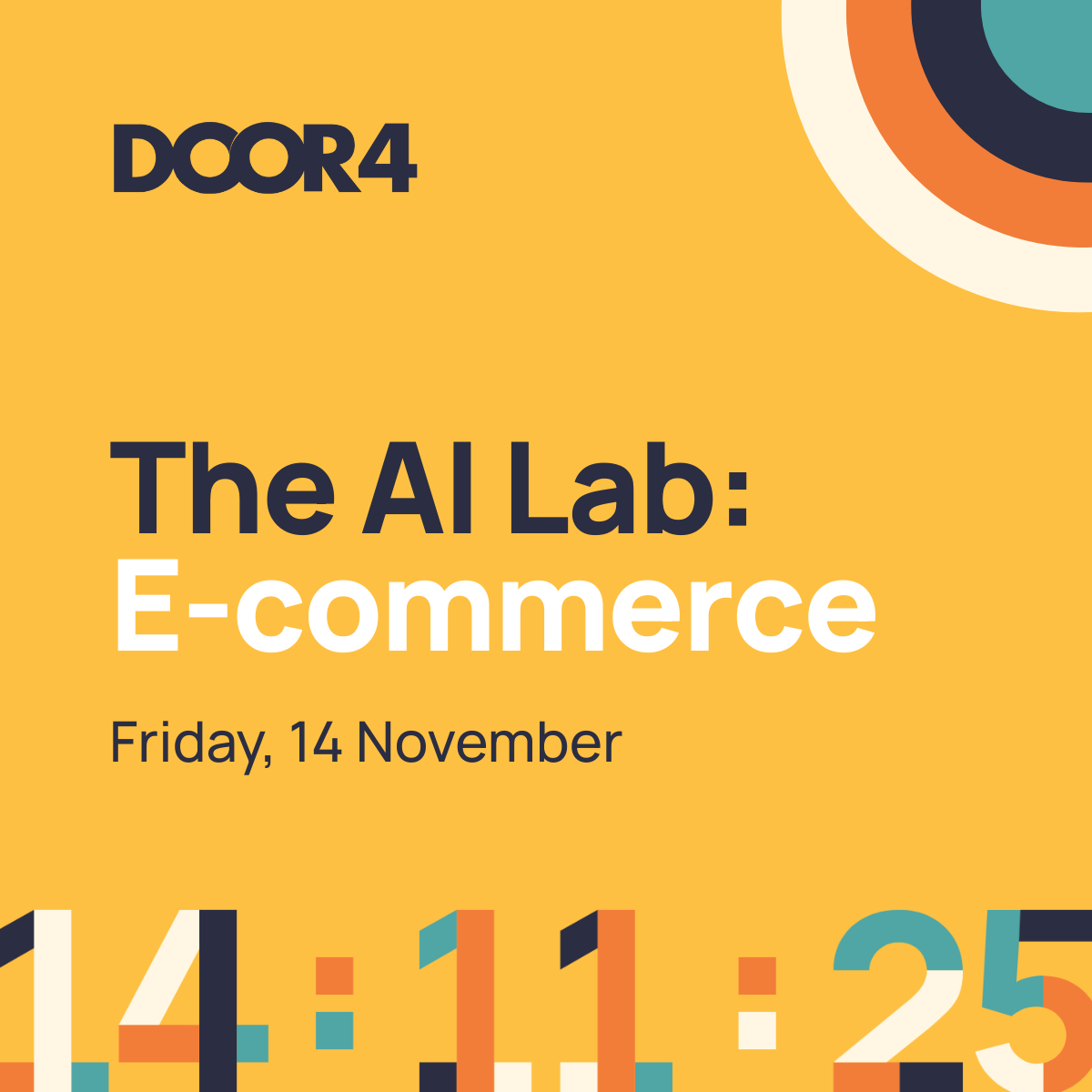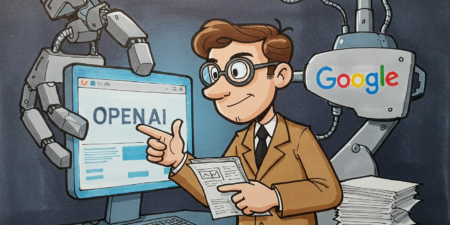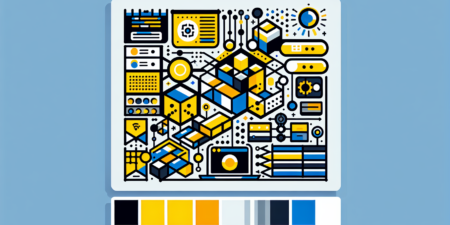Ready to explore the possibilities?
Request a quick call with our team to find out how the Innovation Explorer program can help your business take its next big leap into AI and automation.

What happens to creativity when AI knows everything?
Experimentation has always been central to in marketing, in fact at Door4 test and learn is part of some of the biggest results we deliver often.
 Whether you’re fine-tuning a PPC campaign, optimising on-page SEO, or refining your website’s layout for better conversions, the process has traditionally been built around trial and error. Marketers hypothesise, test on a small scale, analyse the results, and then implement changes more broadly. However, this hands-on, iterative approach is beginning to evolve with the growth of predictive AI. Advanced tools are emerging that could fundamentally transform how we approach testing – shifting from real-world experimentation to simulated outcomes. While this promises faster results, reduced risks, and greater efficiency, it also raises questions about the loss of creativity, the absence of surprise, and how marketers will adapt to this new era of predictive certainty.
Whether you’re fine-tuning a PPC campaign, optimising on-page SEO, or refining your website’s layout for better conversions, the process has traditionally been built around trial and error. Marketers hypothesise, test on a small scale, analyse the results, and then implement changes more broadly. However, this hands-on, iterative approach is beginning to evolve with the growth of predictive AI. Advanced tools are emerging that could fundamentally transform how we approach testing – shifting from real-world experimentation to simulated outcomes. While this promises faster results, reduced risks, and greater efficiency, it also raises questions about the loss of creativity, the absence of surprise, and how marketers will adapt to this new era of predictive certainty.
Experimentation Today: A Balance of Art and Science
PPC, SEO, and CRO have always been a blend of art and science. In PPC, experimentation involves A/B testing ad copy, bidding strategies, or audience segmentation. SEO requires testing changes to meta tags, content structure, or technical elements to see what drives better rankings. For CRO, it’s about trialling different layouts, calls to action, or checkout flows to optimise conversions.
What makes this approach effective is its unpredictability. You can make all the educated guesses in the world, but you’ll never truly know how users will react until you test. Some experiments fail miserably, while others lead to unexpected wins that reveal insights you couldn’t have imagined. These moments of surprise often drive the most innovative campaigns—whether it’s a PPC ad resonating with an audience you hadn’t considered or a subtle design tweak leading to a dramatic spike in conversions.
Predictive AI: A New Era of Testing
Predictive AI, powered by machine learning, is now disrupting the traditional experimentation model. Instead of relying on real-world testing, AI uses historical data, behavioural insights, and vast data sets to forecast outcomes. For instance, in PPC, AI can simulate the performance of different ad creatives, headlines, or audience targets without running actual campaigns. In SEO, predictive analysis can estimate the impact of content changes on rankings before anything goes live. Similarly, in CRO, AI can predict how a design adjustment might influence conversion rates by drawing on patterns from similar websites or datasets.
The appeal is obvious. Why spend weeks testing ad variations when AI can determine the likely winner within minutes? Why risk damaging your SEO performance with a misguided update when AI can simulate the results beforehand? Predictive AI replaces much of the guesswork with data-driven confidence, allowing marketers to focus more on execution than experimentation.
The Cost of Certainty: Losing the Element of Surprise
While predictive AI offers undeniable benefits, it may come at a creative cost. Traditional experimentation thrives on its unpredictability. It’s messy, full of risks, and occasionally delivers “eureka” moments that push campaigns into uncharted territory. Predictive AI, by contrast, streamlines the process, offering preordained results based on data. This efficiency could diminish the spontaneity that fuels some of the best marketing ideas. For example, a PPC ad that unexpectedly outperforms due to an unconventional approach might never be created if AI dismisses it as statistically unlikely. In SEO, chasing unconventional long-tail keywords or experimenting with quirky content formats could fall by the wayside in favour of safer, proven strategies. Similarly, in CRO, AI might recommend changes that are predictable and effective but lack the edge that makes a brand stand out.
One of predictive AI’s most transformative features is its ability to simulate outcomes without the need for small-scale testing. Marketers can model campaign performance across different demographics, regions, or industries without spending budget or time on live trials. This is especially advantageous for smaller businesses or those with tight budgets, as it minimises financial risk while optimising results. However, simulations are not infallible. Predictive AI models are only as good as the data they’re trained on, and human behaviour often defies prediction. Emotional responses, trends, and external factors can lead to unexpected outcomes that AI may not account for. Over-relying on predictive tools could lead to blind spots, causing marketers to miss opportunities that would have surfaced through traditional testing.
The Role of Marketers in an AI-Driven Future
As predictive AI becomes more advanced, the role of marketers will inevitably shift. Rather than running experiments and interpreting results, marketers will focus on feeding AI with quality data and applying its predictions strategically. Creativity won’t disappear—but it will need to evolve. Marketers must become curators of ingenuity, using AI not as a creative crutch, but as a compass. The edge will belong to those who can interpret predictions with human instinct, challenge safe assumptions, and know when to go off-script. Because while AI might show us what’s likely to work, it’s still up to us to make something worth remembering.
Author: Tom Morton, Head of Activation
-
 07.02.2025|Emerging research on AI Overviews highlights stark shifts in click-through rates, with organic clicks dropping significantly for queries featuring these AI elements, yet rising for those without them. As a result, brands—especially in fields like KBB and home and garden—are prompted to rethink their digital strategy
07.02.2025|Emerging research on AI Overviews highlights stark shifts in click-through rates, with organic clicks dropping significantly for queries featuring these AI elements, yet rising for those without them. As a result, brands—especially in fields like KBB and home and garden—are prompted to rethink their digital strategy -
 16.03.2025|A wise man once said every AI breakthrough could rival the internet’s impact—and recent advances seem to prove it. From Google’s Gemini Robotics to OpenAI’s Agent API, AI is moving from chat to action. How do you see it changing your daily life?
16.03.2025|A wise man once said every AI breakthrough could rival the internet’s impact—and recent advances seem to prove it. From Google’s Gemini Robotics to OpenAI’s Agent API, AI is moving from chat to action. How do you see it changing your daily life? -
 28.11.2024|By transitioning from monolithic applications to a microservices architecture, businesses can improve scalability, enhance operational efficiency, and seamlessly integrate with Generative AI for optimised customer interactions. As the market becomes ever more dynamic, could microservices be the key to unlocking your business's potential?
28.11.2024|By transitioning from monolithic applications to a microservices architecture, businesses can improve scalability, enhance operational efficiency, and seamlessly integrate with Generative AI for optimised customer interactions. As the market becomes ever more dynamic, could microservices be the key to unlocking your business's potential?
Door4 opinions and insight.
We have a lot to talk about.Our latest articles, features and ramblings.
We explore performance marketing, AI, communications and optimisation.











